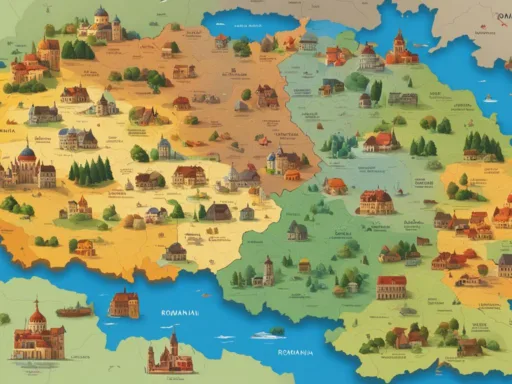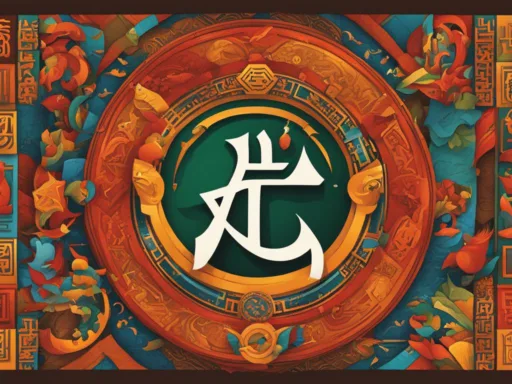Indonesia stands as a testament to cultural richness and diversity, with its tapestry woven deep into the tapestries of its numerous languages. When we delve into the languages spoken in Indonesia, it’s like opening a vibrant, multicolored book, each page fluttering with the sounds of over 700 different tongues. This unique region contributes significantly to the linguistic diversity in Indonesia, accounting for 10% of the world’s languages and marking itself as a beacon of language diversity in Indonesia. From the bustling streets of Java to the quiet villages in Bali, voices in distinct Indonesian dialects chime in unison, creating a chorus that resonates with unity in diversity.
Dizzying in its variety, each island and province offers its own linguistic subset, a signature that marks the identity of its people. Indeed, the rich selection of languages spoken in Indonesia offers more than a means of communication—it provides a window into the heart and soul of the nation’s storied past and dynamic present.
Key Takeaways
- Indonesia is the second most linguistically diverse country globally.
- Bahasa Indonesia serves as the nation’s unifying national language.
- There are over 700 indigenous languages spread across the Indonesian archipelago.
- Language in Indonesia reflects its intricate history and cultural plurality.
- Understanding Indonesian dialects provides insights into the country’s multifaceted cultural tapestry.
- Language policies in Indonesia aim to preserve the plethora of local languages.
The Linguistic Landscape of Indonesia
Embarking on a journey through the archipelago of Indonesia reveals a rich tapestry of languages that paint a vibrant picture of the nation’s cultural heritage. The linguistic landscape of this country is not only a testament to its ethnolinguistic diversity but also to its intricate history of language development and policy.

Bahasa Indonesia, the official language of Indonesia, stands at the heart of communication, serving as a bridge among the country’s myriad of ethnic groups. Its status as the national language is enshrined in the educational and administrative framework, ensuring its ubiquitous presence across diverse societal domains.
The Importance of Indonesian as the National Language
As a standardized form of Malay and the lingua franca of Indonesia, Bahasa Indonesia is more than a means of communication—it is a symbol of unity within diversity. With vast influences from regional languages like Javanese, Sundanese, and Minangkabau, as well as from Dutch, Sanskrit, and Arabic, it forms the backbone of the country’s linguistic identity.
Major Indigenous Languages and Their Role
In the realm of language use in Indonesia, indigenous languages such as Javanese, which is predominant with over 31.8% native speakers primarily in Java, shape the cultural contours of their respective regions. Others like Sundanese, Madurese, and Minangkabau further enrich Indonesia’s linguistic heritage, serving crucial roles in maintaining regional identities.
Coexistence of Local and Regional Dialects
The local languages in Indonesia are as diverse as the islands themselves. Some, like Acehnese, Balinese, and Sasak, are official at the local level and act as regional lingua francas. Across the islands, an intricate web of Indonesian dialects captures the country’s essence, whereby each community’s language reflects and respects the multilingual nature of its society.
Underpinning this linguistic diversity is a robust language policy aimed at preserving these cultural treasures. From the bustling cities where Bahasa Indonesia dominates to the remote locales where regional languages in Indonesia flourish, the government’s support cements a multilingual education system that vows to protect and promote this vast array of local languages for future generations.
Languages Spoken Indonesia: Diversity Beyond the Numbers
Indonesia’s linguistic landscape unfurls like a majestic patchwork quilt, each piece representing the diverse cultures and the deep historical roots that have shaped the nation. With the Indonesian language as the unifying thread, this country is a tapestry of over 300 native tongues, each breathing life into the everyday interactions and social nuances of its speakers. Bahasa Indonesia, though a mother tongue to only a slim portion of the population, carries the immense responsibility of unifying nearly 200 million individuals who use it as their secondary mode of exchange. Its pivotal role strengthens national cohesion and highlights the extraordinary linguistic diversity in Indonesia.

Within the archipelago’s borders, every conversation, every greeting, and every shared story is a testament to Indonesia’s multifaceted oral heritage. The staggering variety of dialects mirrors an array of societal dynamics, each language bearing its own flavor and essence. The importance of language in Indonesia’s cultural mosaic cannot be understated, acting not only as tools for communication but also as enduring emblems of identity and community.
Bahasa Indonesia has inadvertently become a cultural bridge, allowing 200 million speakers to cross linguistic divides and engage in dialogues that enrich and perpetuate the nation’s collective narrative. Here’s a glance at the sheer scope of Indonesia’s linguistic wealth:
| Linguistic Category | Description | Examples |
|---|---|---|
| Indigenous Languages | Native tongues specific to ethnic groups and regions | Javanese, Sundanese, Madurese |
| Regional Lingua Francas | Languages used for interethnic communication | Acehnese, Balinese, Sasak |
| Foreign Influences | Languages incorporated through historical interactions | Dutch, Arabic, Sanskrit |
| Sign Language | Visual mode of communication for the hearing impaired | Indonesian Sign Language |
The Indonesian language and its countless siblings form a linguistic ecosystem as dynamic and vibrant as the coral reefs that fringe the Indonesian seas. It is in the melding of sounds and meanings that we find an audible expression of the nation’s soul—one that speaks volumes about the resilience and richness of its people. To journey through Indonesia’s languages is to traverse a world brimming with stories, each an invaluable thread in the splendid tapestry of linguistic diversity in Indonesia.
Regional Languages and Their Cultural Significance
In the vast archipelago of Indonesia, the echoes of the Indonesian language blend with the vibrant symphony of regional languages, each holding profound cultural significance. Among these, the Javanese language stands as a towering presence, with its roots penetrating deeply into the cultural bedrock of the nation. As we explore further, we uncover the beauty and impact of other regional dialects that together narrate the story of Indonesia’s rich linguistic tapestry.
The Dominance of Javanese in Local Communication
The Javanese language, with its melodious cadence and historical depth, commands a significant role in Indonesia’s communication sphere. Holding the distinction of being the most widely spoken of the regional languages in Indonesia, Javanese flourishes across Java and seeps into the vernacular of provinces in Sumatra and Kalimantan. Its ubiquity not only unites a vast demographic within the Indonesian populace but also carries a certain prestige and cultural cachet that further cements its esteemed status.

The resilience of Javanese as a regional language is more than just about numbers; it’s about the intimate connection between language and identity, and how this connection thrives in the daily lives and traditions of its speakers. As a vessel for carrying rich cultural heritage, the Javanese language continues to be a linchpin in education, literature, and even in the omnipresent Javanese performances known as wayang kulit (shadow puppetry).
Sundanese, Madurese, and Other Local Tongues
The Sundanese language, with its significant number of speakers in West Java, Banten, and Jakarta, emanates its own lyrical charm, further enriching the nation’s linguistic diversity. The tongues of the Sundanese people, expressed through their unique arts, music, and oral traditions, add vivid strokes to the portrait of Indonesia’s cultural narrative.
Similarly, the sounds of the Madurese language resound from the rugged terrain of Madura Island, reverberating through East Java and contributing to the intricate soundscape of Indonesian regional dialects. Madurese not only serves as a medium for day-to-day exchanges but also embodies a sense of regional pride and maintains the integrity of inherited customs.
Woven together, these regional languages fortify the fabric of Indonesia’s society. The table below highlights their significance as integral components of Indonesia’s linguistic heritage:
| Language | Region | Cultural Significance |
|---|---|---|
| Javanese | Central to Eastern Java, Sumatra, Kalimantan | Dominant force in local communication, integral to cultural practices and traditions |
| Sundanese | West Java, Banten, Jakarta | Expressive medium for arts and music, reflecting regional identity |
| Madurese | Madura Island, East Java | Preserves regional heritage and fosters community pride |
The depth of Indonesia’s linguistic landscape is a testament to the nation’s storied past and vibrant living culture. By bringing to the fore these local tongues, from the Javanese language to the Sundanese and Madurese, we peer into the heart of regional identity and celebrate the distinct flavors of Indonesian communication. It is through these regional dialects that the true essence of Indonesia’s wide-ranging cultures continue to thrive and be shared with future generations.
Foreign Influences on the Indonesian Linguistic Fabric
Indonesia’s linguistic evolution is a striking reflection of its historical tapestry, beautifully interwoven with threads from its trade and colonization epochs. The Dutch influence on Indonesia is particularly noteworthy, having left enduring impressions that permeate to this day. Similarly, the Portuguese influence on Indonesia echoes a past where language and culture intersected amidst the spice trade and early regional interactions. While contemporary ties may not seem immediately apparent, these European languages continue to resonate within the socio-legal frameworks and heritage of Indonesia.
Historical Perspectives: Dutch and Portuguese Impact
Despite the nonexistence of official status today, the Dutch language retains its niche, primarily within Indonesia’s intricate legal system, a vestige of the country’s colonial history. Portuguese, albeit more subtle, lives on through linguistic residues found within Indonesian vocabularies, grounding its past presence in this multicultural landscape. These languages, particularly Dutch, contribute to the collective memory and identity of many Indonesians, showcasing the indelible Dutch influence on Indonesia.
Contemporary Trends: English and Mandarin in Indonesian Society
Fast-forward to present-day Indonesia, and the linguistic panorama shifts to underscore the significance of English and Mandarin. English in Indonesia transcends its foreign language classification, increasingly serving as a lingua franca within ASEAN and beyond, demonstrating its evolving role as an auxiliary language. Meanwhile, with the profound presence of the Chinese community, Mandarin in Indonesia flourishes, becoming a currency of communication in trade and cultural exchange. These languages exemplify the effects of globalization, decorating the linguistic mosaic of Indonesia with contemporary hues of international discourse.
FAQ
What languages are spoken in Indonesia?
Indonesia is a polyglot nation with over 700 living languages. These include indigenous Austronesian languages, over 270 Papuan languages in the east, and the official national language, Bahasa Indonesia. Significant regional languages such as Javanese, Sundanese, Madurese, and Minangkabau are also widely spoken across the archipelago.
Why is Indonesian considered the national language?
Indonesian, or Bahasa Indonesia, is the standardized form of Malay and was chosen as the national language to unite the diverse archipelago. It incorporates a rich vocabulary from many local languages, as well as from Dutch, Sanskrit, Portuguese, Arabic, and English. Indonesian acts as a lingua franca, facilitating communication and administrative coherence across varied ethnic groups in Indonesia.
What are some major indigenous languages of Indonesia?
The major indigenous languages of Indonesia include Javanese, the most spoken local language, Sundanese prominent in West Java and Banten, Madurese spoken on Madura Island and parts of East Java, and Minangkabau from the highlands of West Sumatra. These languages play crucial roles in their regions and contribute significantly to Indonesia’s cultural diversity.
How do local and regional dialects coexist in Indonesia?
Local and regional dialects in Indonesia coexist with the national language through a widespread practice of plurilingualism, where Indonesians commonly speak their native tongue alongside Bahasa Indonesia. The government supports the use of local languages, especially in education, ensuring their preservation and recognizing their importance at regional and local levels.
What contributes to the linguistic diversity in Indonesia?
Linguistic diversity in Indonesia is the result of its vast archipelago geography, which hosts hundreds of ethnic groups, each with its language or dialect. This diversity is also shaped by historical trade routes and colonization, bringing influences from other languages and cultures. Additionally, the national language policy, which encourages the use of Bahasa Indonesia alongside indigenous languages, has also contributed to this linguistic tapestry.
How does the Javanese language dominate local communication in Indonesia?
The Javanese language is dominant in local communication due to the large population of Java Island, where it is primarily spoken. It’s the native tongue for roughly a third of the Indonesian population and is also used by Javanese communities in other provinces. Its dominance is not just in numbers but also in cultural impact, as it is deeply ingrained in local traditions, arts, and daily interactions.
Why are languages like Sundanese and Madurese important in Indonesia?
Languages like Sundanese and Madurese hold vital importance as they embody the regional cultural heritage and identity. Sundanese, for example, is essential to the ethnic and cultural identity of people in West Java, while Madurese reflects the cultural legacy of Madura Island. These languages represent the unique historical and cultural narratives of their respective regions.
What influence did Dutch and Portuguese colonization have on Indonesia’s languages?
Dutch and Portuguese colonization left a significant linguistic imprint on Indonesia. The Dutch contributed to the development of Bahasa Indonesia by introducing new vocabulary, administrative terms, and influencing its structure. Portuguese impact is noted in loanwords found in Bahasa Indonesia and various local languages due to early trade and colonization efforts.
How do English and Mandarin feature in the contemporary Indonesian linguistic landscape?
English and Mandarin have gained prominence in contemporary Indonesian society due to globalization and strategic geopolitical relationships. English is increasingly used as a second language and is important for international trade, education, and as a lingua franca within the Association of Southeast Asian Nations (ASEAN). Mandarin is also becoming more prevalent, especially in business and cultural exchanges, due to the significant ethnic Chinese community in Indonesia.






